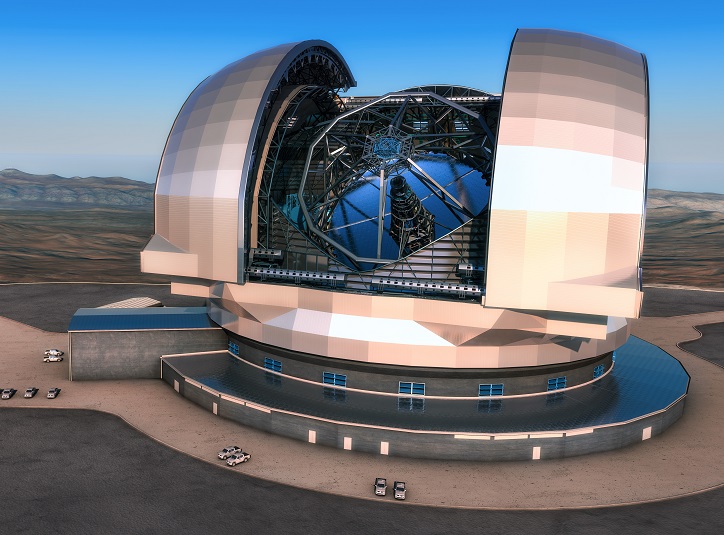Public Trust in Science: Enabling Optical Research and Discovery for the Benefit of Humankind
C. Randy Giles, OSA Science Advisor
In the Chilean Atacama desert on the summit of Cerro Armazones, construction of the world’s largest optical telescope is underway. The 39.3 meter diameter Extremely Large Telescope (ELT) will be unrivaled in its ability to peer deep into space when it sees first light in 2025. With an image resolution 15 times better than the Hubble Telescope and 13 times the light gathering capability of today’s largest telescopes, the ELT will accelerate the search for exoplanets and probe the early lives of stars and galaxies. The findings from the ELT will deepen our understanding of the universe and our place in it.

Caption: This artist’s impression shows the European Extremely Large Telescope (E-ELT) in its enclosure. The E-ELT will be a 39-metre aperture optical and infrared telescope sited on Cerro Armazones in the Chilean Atacama Desert, 20 kilometres from ESO’s Very Large Telescope on Cerro Paranal, which is visible in the distance towards the left. The design for the E-ELT shown here is preliminary.
Credit: European Southern Observatory
But the ELT would never come to be without public trust in science and in the scientists and engineers commissioned to the task. It took citizens from 16 partner countries to believe that the ELT is 1.2 billion euros well spent. It would be presumptuous and naïve to think this public trust in science is unassailable; it is earned and it is fragile. Whether opening our eyes to the universe or unraveling the mysteries of life, science may be driven by human need and curiosity but is enabled by a society that believes in its value.
There are many who question the scientific method and others who doubt scientific results that are counter to their views. Therefore, it is incumbent upon the scientific community to engage with the public to listen, educate and gain trust. A newly launched initiative, the Trust Science pledge, is an example of public engagement to foster this trust. For this year’s International Day of Light (16 May), organizers are encouraging individuals around the globe to sign the Trust Science pledge and state their confidence in the scientific process. Nobel laureates, scientists and engineers, educators, governments and individuals from all walks of life have signed the pledge, and you can too. It will make a difference.
Let’s look at a recent extraordinary breakthrough in astronomy that was only possible because the funding agencies, which means the public, believed in its value. In 2019, the first direct image of a supermassive black hole was announced. The “snapshot” was made using the Event Horizon Telescope (EHT), an array of radio telescopes scattered about the planet. It took funding a team of 760 scientists and engineers from nearly 200 institutions worldwide to achieve the breakthrough image. That’s a lot of public trust.
Space science is not all about giant telescopes searching for supermassive black holes or extrasolar planets; there is an incredible vitality in space optics and photonics closer to home. At the Trust Science website, you can read about the exciting research of scientists who are signatories to the pledge. These “Champions of Science” include Celine d’Orgeville, who at the Australian National University is investigating laser light scattering to track orbital debris that poses a growing threat to space assets that are essential to global navigation, communications and Earth observation. In the United Kingdom, Hannah Joyce is developing nanowire, rad-hard solar cells that could survive the rigors of outer space, whether on satellites orbiting Earth or on deep-space probes. These scientists, and others, are not only champions of science, but they are advocates for public trust in science as we all can be.
